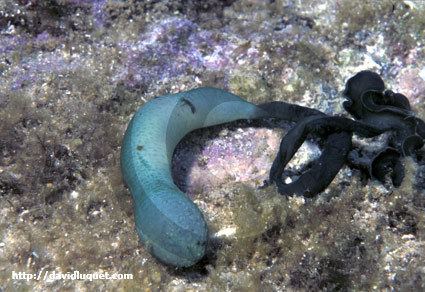Kingdom Animalia Family Bonelliidae Scientific name Bonellia viridis Higher classification Bonellia | Order Bonelliida Genus Bonellia Phylum Annelida Rank Species | |
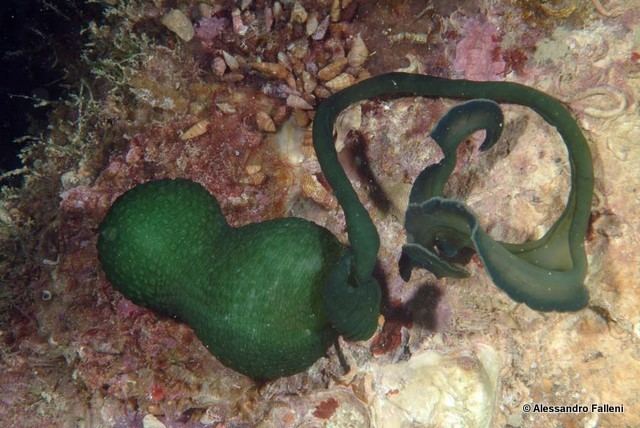 | ||
Similar Bonellia, Echiura, Urechis, Sipuncula, Serpula vermicularis | ||
Bonellia viridis sexo a la carta
Bonellia viridis, the green spoonworm, is a marine worm (Class Echiura, phylum Annelida) noted for displaying exceptional sexual dimorphism and for the biocidal properties of a pigment in its skin.
Contents
- Bonellia viridis sexo a la carta
- Bonellia viridis
- Distribution
- Description
- Bonellin as a biocide
- Sexual dimorphism
- References
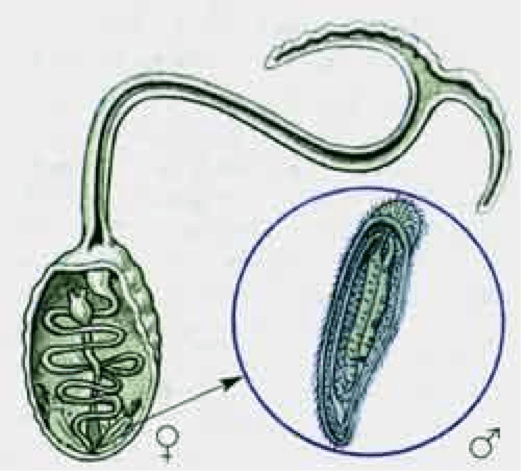
Bonellia viridis
Distribution
The species is wide-ranging, found in the north-eastern Atlantic Ocean and the Mediterranean Sea.
Description
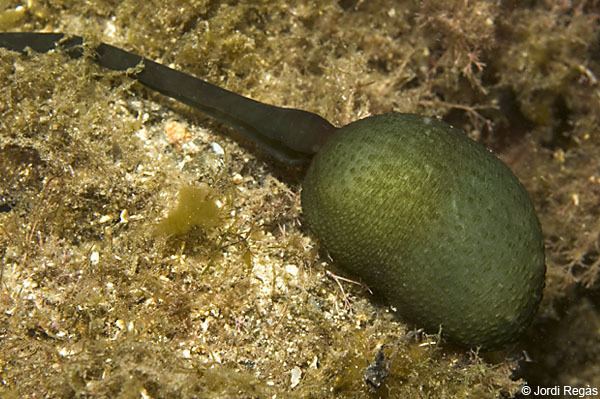
The pale- to dark-green female, with a 15 cm-long, round or sausage-shaped body, lives on the sea-floor at a depth of 10 to 100 metres, concealed by burrowing in gravel or hiding in rock crevasses or burrows abandoned by other animals. It has two anchoring hooks underneath its body and an extensible feeding proboscis up to 10 times its body-length. It is mainly a detritivore, feeding also on small animals. The male is rarely observed: it has a flat, unpigmented body which grows to only 1–3 mm, taken up mostly by reproductive organs and devoid of other structures; it lives on or inside the body of a female.
Bonellin as a biocide
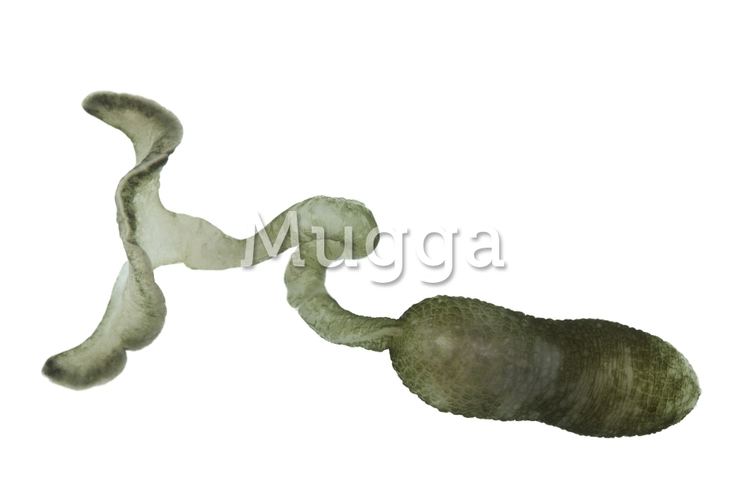
The adult Bonellia female produces a vivid green pigment in its skin, known as bonellin. This chemical, concentrated mostly in the proboscis, is highly toxic to other organisms, capable of paralyzing small animals. In the presence of light, bonellin is a very effective biocide, killing bacteria, larva of other organisms, and red blood cells in laboratory tests. It is currently being investigated as a possible model for novel antibiotics.
Sexual dimorphism
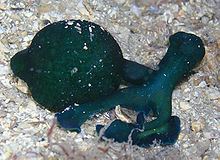
The same chemical plays a unique role in the worm's sexual differentiation. The planktonic, free-swimming Bonellia larvae are initially sexually undifferentiated. Larvae which land on unoccupied sea-floor mature, over the period of years, into adult females. Most larvae, however, come in contact with the bonellin in the skin of an adult female—its body or its roving, bonellin-rich proboscis—and are masculinised by this exposure. The chemical causes these larvae to develop into the tiny males, which cling to the female's body or are sucked inside it by the feeding tube, to spend the remainder of their lives inside her genital sac, producing sperm to fertilize her eggs, reliant on her for all other needs.
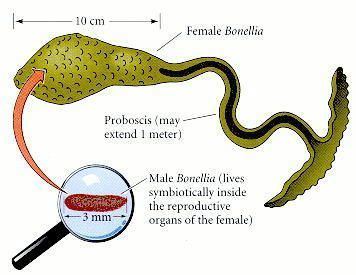
The sex of a Green Spoonworm is thus determined by external, environmental factors (the presence or absence of bonellin), not by internal, genetic factors (chromosomes), as is the case with most other sexually-differentiated organisms. This environmental sex determination helps Green Spoonworm populations respond to the availability of burrows.
